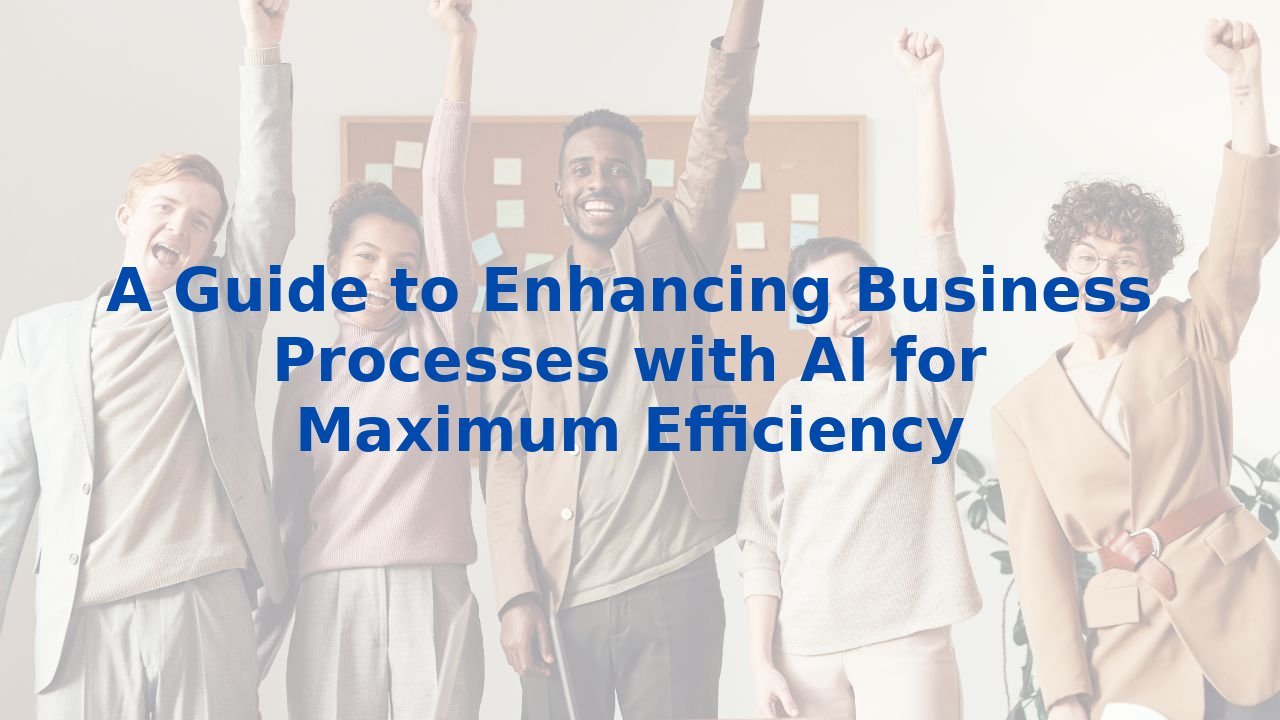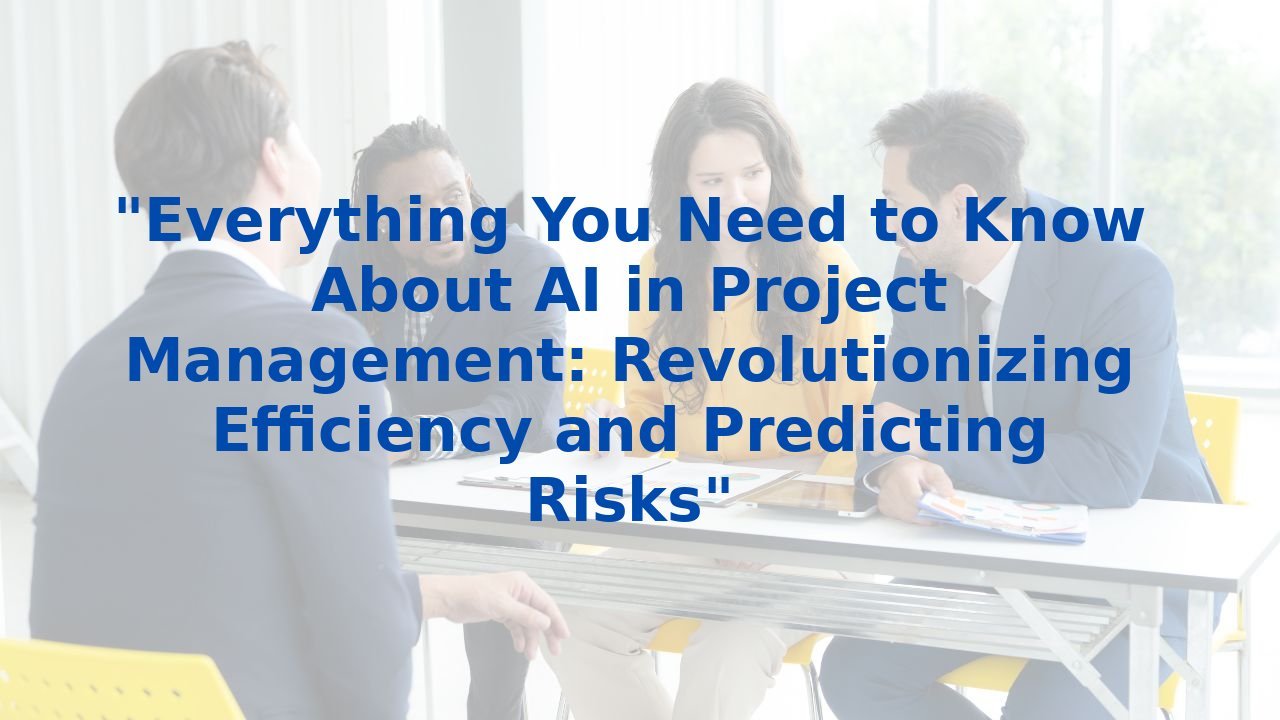A Guide to Enhancing Business Processes with AI for Maximum Efficiency
A Guide to Enhancing Business Processes with AI for Maximum Efficiency
In a bustling business landscape where every moment counts, enhancing efficiency is not just a goal; it's a necessity. Enter Artificial Intelligence (AI)—a transformative force capable of revolutionizing business processes. By automating routine tasks, processing vast datasets, and delivering predictive insights, AI empowers organizations to streamline their operations and boost productivity. This guide explores how AI enhances key business processes and highlights its tremendous potential for efficiency improvement within your organization.
Understanding Business Process Management
Business Process Management (BPM) is the backbone of operational success, originating in the late 1980s as a framework for improving efficiency and productivity. BPM revolves around the systematic identification, analysis, and enhancement of business processes aimed at achieving specific objectives. The methodology includes various phases: process discovery, process mapping, process automation, process management, and continuous improvement—a loop of excellence that keeps evolving.
How AI Enhances Business Processes
1. Process Discovery and Mapping
AI in Process Discovery: The journey begins with uncovering existing operations. AI employs techniques like process mining and natural language processing, weaving through data to reveal inefficiencies that often escape the human eye. This intelligence provides a panoramic view of your organization's processes, enabling a keen identification of bottlenecks for targeted improvement.
AI in Process Mapping: Once processes are discovered, the next step involves creating visual workflows. AI utilizes machine learning tools to generate comprehensive process maps, keeping documentation current and precise. These visual aids not only streamline understanding but also highlight interconnected processes, ensuring you focus on areas ripe for enhancement.
2. Process Automation
Automating Repetitive Tasks: Imagine a world where mundane and high-volume tasks dissolve into seamless automation! AI excels in handling repetitive operations, such as data entry and customer inquiries. By utilizing AI-powered chatbots, organizations can provide instant responses to routine questions, allowing human agents to channel their energy into more complex, value-added activities.
3. Process Management and Improvement
Real-Time Monitoring: Monitoring becomes a precision tool with AI. Real-time tracking of key performance indicators (KPIs) ensures your team can react swiftly to emerging issues. Early identification of potential challenges allows businesses to pivot quickly, optimizing operations on the fly.
Predictive Analytics: AI doesn’t just analyze data; it discerns patterns and trends that can inform future strategies. This capability transforms decision-making, empowering businesses to adapt resource allocation proactively and predict market dynamics. Furthermore, predictive maintenance minimizes equipment downtime, enhancing operational reliability.
Benefits of AI for Improving Efficiency
Integrating AI into business processes isn't merely about keeping pace; it’s about outpacing the competition. Consider the myriad of benefits:
- Enhanced Efficiency: Automation cuts the time and effort involved in managing processes, leading to significant time savings.
- Improved Accuracy: AI automates error-prone tasks, resulting in higher quality and consistency across outputs.
- Increased Productivity: By liberating employees from mundane tasks, focus shifts to strategic initiatives, driving productivity upward.
- Competitive Advantage: Organizations leveraging AI-driven strategies gain a distinct edge, fortifying their market position through optimized operations.
The Importance of Training Employees for AI
The real magic of AI emerges when combined with skilled personnel. Training employees to work effectively with AI systems is vital:
- Understanding AI Capabilities: Knowledge is power. Employees must understand the strengths and limitations of AI to engage it effectively in their workflows.
- Operational Efficiency: Training ensures that team members can maximize the benefits that automation and analytics provide.
- Adaptability: In an era of fast-evolving technology, educating employees fosters a culture of adaptability, enabling them to embrace emerging tools with confidence.
- Decision-Making: Well-trained employees can leverage AI insights to make informed and strategic choices, translating data into significant business outcomes.
Conclusion
The path to enhanced business efficiency is paved with the integration of AI. By thoroughly understanding BPM phases and recognizing the transformative impact of AI within each stage, organizations can unlock the full potential of their operations. Additionally, investing in employee training is not just beneficial; it is essential. Empowering your workforce ensures that the transformative benefits of AI are realized across your organization, fostering a culture of innovation and adaptability.
To take the next step in your AI journey, consider exploring tailored training solutions designed to equip your workforce with the essential skills for the future. Embrace the change, harness the potential of AI, and thrive in tomorrow's business environment!



